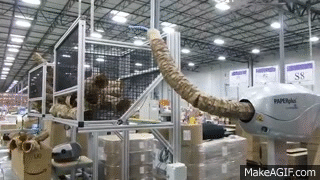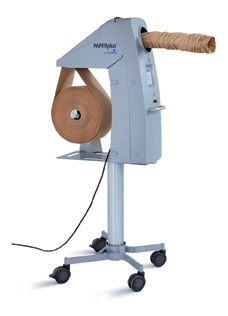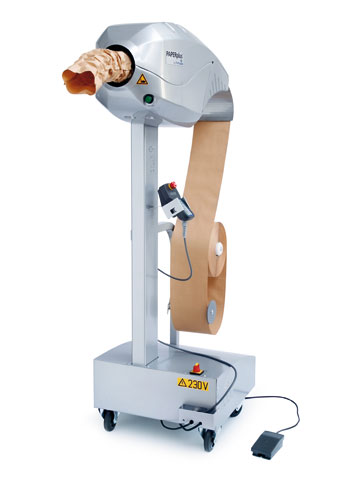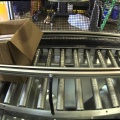Chevron Protective Packaging Proves the Right Choice For American Wholesaler
Last updated on
Watch how Storopack takes Baker & Taylor ( a Wholesaler of Books, Videos and More ) through the process of identifying key areas for improvements such as; ergonomics, productivity, safety, material usage and COSTS!
Some comments from the packers:
It’s nice not having to look down for a foot pedal.
The Chevron system always has paper packaging waiting for us.
Its really nice to only need 2 or 3 paper tubes for packing. Unlike the old system where we had to stuff and stuff paper until it was full.
Problem
Baker & Taylor is an American wholesaler with a longstanding tradition of dealing in books, videos, and music supplies. In the fall of 2012, its Distribution Center in Indianapolis started using a new protective packaging solution created by Storopack. Since then, the total cost of packaging has decreased by 40%. This incredible reduction is the result of a comprehensive range of services that included an audit, a process cost analysis, and on-site testing.
Depending on the season, Baker & Taylor sends between 2,000 and 5,000 packages per day to libraries and stores. For many years, the company used single-layer paper as protective packaging. The respective machines were located inline directly adjacent to the roller conveyor.
An employee activated a foot switch in order to cut off the padding section at the desired length and then stuffed the paper into the package using both hands.
While the quality of the paper was satisfactory for transport protection, other factors, however, no longer met modern requirements. Employees had difficulties inserting the packaging material into the packages at the required speed. They were also negatively impacted by the constricted and inflexible structure of the work stations. During peak periods, this insufficient level of output became increasingly problematic, resulting in mistakes in the utilization of protective packaging. The paper was poorly distributed or was simply inadequate.
Audit Process
Baker & Taylor decided to consult Storopack as specialists for protective packaging solutions. The project started with an audit in the distribution center. Storopack used a questionnaire that it had developed specifically for protective packaging solutions, and which captured the physical audit information. The additional management audit was based on the jointly noted information provided about the customer’s objectives and the relative importance of the objectives.
The audit confirmed the initial observations that the packaging process was cumbersome. On average, an employee required eleven touches for the protective packaging.
The Storopack team observed difficulties with the activation of the foot switch. The required movements disturbed the packaging workflow. Furthermore, employees were unable to precisely allot the amount of paper. For Baker & Taylor, this process was not a viable situation.
The analysis of the audit documented how inconsistent the individual protective packaging process was. For instance, the amount of paper used in packages with comparable contents differed greatly. The time required for creating the individual protective packaging, which should be predictable and standard, varied.
The protective packaging and the protective packaging process could not be standardized with their system. Moreover, the lack of standards gave subjective decisions more weight and increased the error rate. Baker & Taylor also did not have a system to calculate the actual cost of materials and labor for the protective packaging of each packaging unit.
The three management objectives with the highest priority were therefore:
- Improve ergonomics
- Increase productivity
- Lower the cost of materials and cost per packaging unit while maintaining the same quality for the protective packaging
Protective Packaging Solution
Due to the audit, the Storopack team had powerful data for developing an improved solution. The project team fine-tuned the idea of an integration on the basis of PAPERplus® Chevron during several meetings with the specialists from the central design center in Cincinnati.
idea of an integration on the basis of PAPERplus® Chevron during several meetings with the specialists from the central design center in Cincinnati.
In August, the solution was put to the test. For this test, Storopack set up a packing workstation in the distribution center. A device from the PAPERplus® Chevron2 series was set up as inline machine system.
After the test, Baker & Taylor implemented the design plan of the test installation and the overall layout of the workstation. In automatic mode, individual paper padding was put in the packer’s reach via a short metal slide. The packer therefore could use both hands to take some paper padding and insert it into the box. The machine automatically made additional padding.
The PAPERplus® Chevron paper padding creates a high degree of volume that quickly fills up empty spaces, allowing the packer to use less material than when using flat sheets of paper as had previously been used for protective packaging.
In the initial tests, the individual paper padding had a length of 24 inches. The plan called for four pieces of padding per package. It turned out however that five shorter pieces of padding filled the empty space faster.
The resulting comparison between the test system and the former process used by Baker & Taylor was clear. Without the time-consuming effort to add extra packing material, employees used fewer touches. Now, they could insert individual pieces of padding with two hands instead of pressing a pad into the empty space with both hands. They no longer have to worry about the timing of the machine, because paper padding is always available. As a result, employees were approximately 25% faster.
PAPERplus® Chevron attains the required padding performance and volume filling with less paper. This, in turn, leads to reduced handling. Above all, however, it means a significant weight reduction. The packages are more than 30% lighter. Less paper also means less resource consumption.
Tyler Baumgardner, Operations Manager at Baker & Taylor, reported that the figures make sense and the feedback from his team is positive. “All of us were able to experience how easy, functional, and flexible the solution is. After we had hired Storopack to implement the system, we could hardly wait use it. Anyone who had seen the new workstation wanted to have theirs upgraded as quickly as possible.”
The employees are excited that they no longer need to use the foot switch. Due to the layout of the premises, this switch frequently led to a strained posture. Employees now have more freedom in organizing their workstations. Since the PAPERplus® Chervon2 system does not require much space, there is now more room to rearrange the monitor, the labeling machine, and the printer if necessary.
Today, all eight packaging workstations feature a PAPERplus® Chevron paper machine.





The pulse of the packaging community